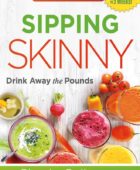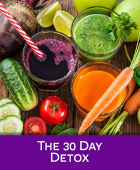The Truth About Cholesterol
More and more people are telling me that their cholesterol numbers are too high for their age when the number is only around 190. This is a very good number. According to NIH 200 or less is considered very good. But that isn’t communicating to all health practitioners. The whole issue of cholesterol needs to be revisited because cholesterol lowering drugs are destroying many lives.
The husband of a friend of mine started taking a cholesterol-lowering drug several months ago. He quit taking it after he ended up in serious pain and felt like he was dying. He can barely walk now. He has severe pain that travels throughout his body and manifests as severe cramps in various parts of his body. It moves from his head to neck, or it may travel to his chest, or show up in his legs. He never knows where it will strike. The pain is more severe than anything he has ever experienced.
Some time ago I wrote an article on fats and oils where I discussed the cholesterol myth. Heart surgeon Dwight Lundell, MD confirmed what my research uncovered. He states, “the recommendations regarding lowering cholesterol are no longer scientifically or morally defensible. The discovery a few years ago that inflammation in the artery wall is the real cause of heart disease is slowly leading to a paradigm shift in how heart disease and other chronic ailments will be treated.”
He adds that “the long-established dietary recommendations of the no-fat or low-fat diet have created epidemics of heart disease, obesity, and diabetes, the consequences of which dwarf any historical plague in terms of mortality, human suffering and dire economic consequences.”
About 25 percent of the population takes statin medications. Despite the fact that we have reduced the fat content of our diets, more Americans will die this year of heart disease than ever before.
The Wynn Institute of London found that as many people die from heart disease that have low cholesterol as have high cholesterol. We need to ask why we keep using the statin drug protocol when it isn’t working.
Inflammation is the real cause. The makers are noted below. One should be tested for these markers as indicative of heart disease issues.
- C-Reactive Protein (CRP)
- Serum Ferritin
- Fibrinogen
- Homocysteine
- Interleukin-6
- Lipoprotein(a) or Lp(a)
Inflammation–The True Cause of Heart Disease
Simply stated, without inflammation being present in the body, there is no way that cholesterol will accumulate in the walls of the blood vessels and cause heart disease and strokes. Without inflammation, cholesterol will move freely throughout the body as nature intended. It is inflammation that causes cholesterol to become trapped and collect in blood vessels.
Inflammation is your body’s natural defense response to foreign invaders such as bacteria, toxins or viruses. The cycle of inflammation protects your body from bacterial and viral invaders. However, if you chronically expose your body to injury by toxins or foods the human body was never designed to process, chronic inflammation occurs. Chronic inflammation is as harmful as acute inflammation is beneficial.
Few people deliberately expose themselves repeatedly to foods or other substances that are known to cause injury to the body. With the exception of smoking, many people do this by simply following the mainstream diet that is low in animal fat and high in polyunsaturated fats and refined carbohydrates including sugar and refined flour. This causes repeated injury to the blood vessels and creates chronic inflammation leading to heart disease, stroke, diabetes, and obesity.
The biggest culprits of chronic inflammation include an overload of simple, highly processed carbohydrates (sugar, flour and all the products made from them) and the excess consumption of omega-6 vegetable oils that include soybean, corn safflower, and sunflower that are found in many processed foods, salad dressings, mayonnaise, fried foods, and snack foods.
Dr. Lundell says, “Take a moment to visualize rubbing a stiff brush repeatedly over soft skin until it becomes quite red and nearly bleeding. If you kept this up several times a day, every day for years, what do you think would happen? If you could tolerate the pain, you would have a bleeding, swollen, infected area that became worse with each repeated injury. This is a good way to visualize the inflammatory process that could be going on in your body right now.”
Dr. Lundell adds, “Regardless of where the inflammatory process occurs, externally or internally, it is the same. I have peered inside thousands upon thousands of arteries. A diseased artery looks as if someone took a brush and scrubbed repeatedly against its wall. [This happens because] several times a day…the foods we eat create small injuries compounding into more injuries, causing the body to respond continuously and appropriately with inflammation.”
Foods loaded with sugars and foods that turn to sugar easily, along with omega-6 oils, have been the mainstay of the American diet for six decades. These foods have been slowly poisoning everyone by creating an inflammatory condition.
How does eating a simple sweet roll, dish of pasta, or a bowl of ice cream create a cascade of inflammation in your body that injures your arteries and make you sick?
Blood sugar is controlled in a very narrow range. Extra sugar molecules attach to a variety of proteins that injure the blood vessel walls. This repeated injury sets off inflammation. When you spike your blood sugar level several times a day it is exactly like taking sandpaper to the inside of your delicate blood vessels.
While you may not be able to see it or feel it, the damage is still occurring. Dr. Lundell said he saw it in over 5,000 surgical patients spanning 25 years of practice, who all shared one common denominator — inflammation in their arteries.
When you look at sweet rolls, donuts, or cookies, those innocent looking goodies not only contains sugar, they are usually baked in one of the omega-6 oils such as soybean, corn, sunflower, or safflower oil. Chips and fries are soaked in omega-6 oil; processed foods are manufactured with them. While omega-6’s are essential –they are part of every cell membrane controlling what goes in and out of the cell — they should be in their whole state as found in seeds or vegetables and must be in the correct balance of 3:1 omega-6 and omega-3 fats.
If the balance shifts by consuming excessive amounts of omega-6 fats, the cell membrane produces chemicals called cytokines that directly cause inflammation. The American diet has a significant imbalance of these two fats. The ratio of imbalance ranges from 15:1 to as high as 30:1 in favor of omega-6. That’s a tremendous amount of cytokines causing inflammation.
There is no escaping the fact that the more we consume prepared and processed foods, the more we trip the inflammation switch day by day. The human body cannot process, nor was it designed to consume, foods packed with sugars and omega-6 oils.
What you can do to turn off inflammation in your body.
Eat whole foods in their natural state. Choose only carbohydrates that are complex such as fruits and vegetables and ancient grains. Juice every day and include ginger root–an anti-inflammatory ingredient. Omit sugar and all sweets; use only stevia as a sweetener. And, use only virgin, organic coconut oil, extra virgin olive oil, almond oil, macadamia nut oil, sesame oil, grapeseed oil, ghee, or butter from grass-fed beef.
Animal fats contain less than 20 percent omega-6 and are much less likely to cause inflammation than the supposedly healthy oils labeled polyunsaturated. The “science” that saturated fat alone causes heart disease doesn’t exist. The science that saturated fat raises blood cholesterol is also very weak. The body makes cholesterol. “Since we now know that cholesterol is not the cause of heart disease, the concern about saturated fat is even more absurd today,” says Dr. Lundell.
The cholesterol theory that led to the no-fat, low-fat diet, in turn, created the very foods now causing an epidemic of inflammation. Mainstream medicine made a terrible mistake when it advised people to avoid saturated fat in favor of foods high in omega-6 fats and sugar. We now have an epidemic of arterial inflammation leading to heart disease, obesity, diabetes, and other killers. By eliminating inflammatory foods, juicing fresh vegetables and including ginger root, along with adding essential nutrients from fresh unprocessed food, you can reverse years of damage in your arteries and throughout your body from consuming the typical American diet.
Include more turmeric in your anti-inflammation diet that avoids sugar and includes only healthy oils and fats to lower inflammation. Research shows that turmeric is a powerful anti-inflammatory, anti-tumor agent, and antioxidant. Curcumin, the active ingredient in turmeric, has been shown to influence more than 700 genes. It can inhibit cyclooxygenase-2 (COX2) and 5-lipooxygenase (5-LOX), as well as other enzymes that have been implicated in inflammation. Also, bone broth is very high in the anti-inflammatory amino acids glycine and proline. Include this wonderful spice with bone broth; it can definitely help you control the true cause of heart disease.
If you know someone considering cholesterol-lowering drugs, please share this article with them.
 The Ginger Hopper with a Twist
The Ginger Hopper with a Twist
Ginger has been shown in scientific studies to be an anti-inflammatory. Include ginger root in all your juices.
- 5 medium carrots, scrubbed well, green tops removed, ends trimmed
- 1 green apple
- 1-inch piece fresh ginger root, peeled
- 1/2 lemon, peeled if not organic
Cut produce to fit your juicer’s feed tube. Juice ingredients and stir. Pour into a glass and drink as soon as possible.
Serves 1
From The Juice Lady’s Living Foods Revolution
Cholesterol Chart
Total Cholesterol*
Ideal Range = 180 to 200 mg/dL if less than age 70
Ideal Range = Up to 300 if older than age 70
HDL Cholesterol
Ideal level = Above 50 mg/dL
LDL Cholesterol
Ideal level = Below 100 mg/dL
Triglycerides(TG)
Ideal level = Below 100 mg/dL
C-Reactive Protein(CRP)
Ideal level = Below 1 mg/L (0.1 mg/dL)
Homocysteine
Ideal level = Below 8.0 micromoles/L
Lipoprotein(a)ieLp(a)**
Ideal level = Below 10 mg/dL
Ferritin
Ideal range = 20-50 ng/ml (Above 80 is trouble)
Fibrinogen
Ideal range = 150-300 mg/dL
* Cholesterol: It is not advisable to have total cholesterol below 150 at any age due to increased risk for internal hemorrhage, depression, and suicide.
Note: A mnemonic to help you remember that LDL is the “BAD” cholesterol: LDL = Low Down Loathsome cholesterol.
** Lp(a): LDL + APO(a) = Lp(a). Artery blockage (plaque) is composed of 90-100% Lp(a) NOT of ordinary cholesterol. Lp(a) is a Cholesterol Cardiac Risk Factors
Cholesterol/HDL Ratio (ie Total Cholesterol divided by HDL):
Cardiac Risk Ratio in Males Ratio in Females
High risk (3X): 9.7 to 23.4 7.2 to 11.0
Above average risk (2X): 5.1 to 9.6 4.5 to 7.1
Average risk: 3.5 to 5.0 3.4 to 4.4
Below average risk (1/2): 1.0 to 3.4 1.0 to 3.3
HDL Percentage: HDL/Cholesterol X 100 (ie HDL divided by Total Chol X 100):
Cardiac Risk HDL in Males HDL in Females
High risk (3X): Below 10% Below 14%
Above average risk (2X): 10 to 19% 14 to 22%
Average risk: 24% (Range 20 to 29) 26% (Range 23 to 30)
Below average risk (1/2): Above 29% Above 30%
LDL/HDL Risk Ratio (ie LDL divided by HDL):
Cardiac Risk Ratio in Males Ratio in Females
High risk (3X): 6.4 to 8.0 5.1 to 6.1
Above average risk (2X): 3.7 to 6.3 3.3 to 5.0
Average risk: 1.1 to 3.6 1.6 to 3.2
Below average risk (1/2): Below 1.1 Below 1.6










I enjoyed this article. Although my cholesterol is not high, I have taken a test of my heart which shows my calcium level to be very high and so have been prescribed a cholesterol-lowering drug.
My husband has been taking one for years with no side effects.
There are ways to lower your calcium naturally. That would be my first option if it were me.
Thank you for a wonderful article. Thank you for speaking truth.
So glad you enjoyed my article Missy.
Does Walnut oil count as a good oil?
Yes, it is a good oil.
Thanks for this informative article. My eighty year old sister was on a statin medication, she had terrible side effects; her family refused to stop the medication until I shared your article with her son, he immediately discontinued the medication. I was taking Pravastin, switched to Simvastatin both were causing joint pain, cramping in my legs, terrible night-mares and difficulty sleeping.
I stopped taking both of them. If people can bring a class action lawsuit for Talcum Powder, I don’t see why a class action suit shouldn’t be brought against the “Big Pharma” of statin drugs.
Rosie, I’m so thankful that my article has helped you and your sister. Best of health!
Hello,
Do hormonal changes/menopause create high cholesterol/high LDL levels? I lost 15 lbs, exercise every day, healthy eater.
Yes, as estrogen drops cholesterol can go up. The # you need to be most aware of is the good one HDL and the ratio between that and LDL. Cholesterol is not the culprit in heart disease but all the other markers I mention in the article.
Is Rapeseed oil classed as a good oil?
No. It’s canola oil. Rapeseed is a big GMO crop.
What would be a natural way to lower calcium?
I would need to know more about your health issues. There are many possibilities as to what may be causing this. That would be important to know first. Then we could design a healing diet for you. You could sign up for our nutrition counseling and we can design a healing diet for you.